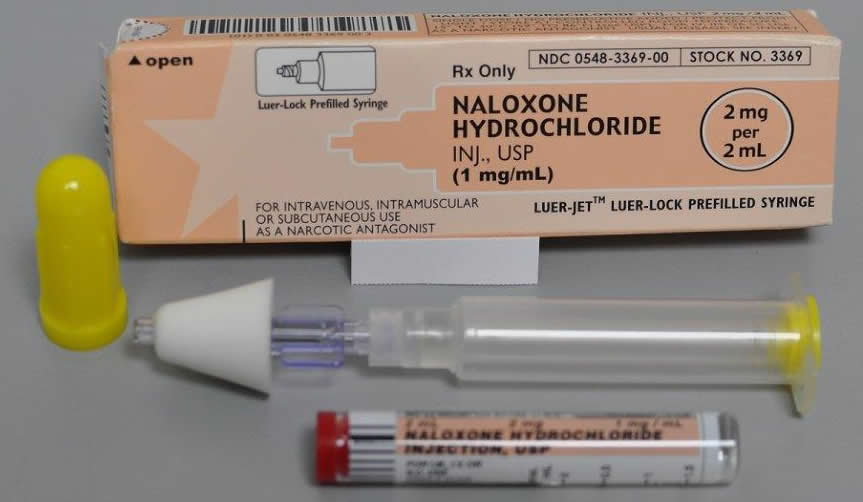Virtual Drug Bag
|
NALOXONE |

PACKAGED: 2 mg in 2 ml vial, 1 mg/ml (6 in drug bag)
LOCATION: Narcan Pouch
NOTE: Naloxone administration should be to improve respirations in an unresponsive patient with a hypoventilation condition, and not to awaken an unconscious patient. It should be given slowly to titrate to effect. Narcan can precipitate narcotic withdrawal, with all of its problems. If the patient has a pulse, Naloxone should be given before intubation.
After administration of Naloxone, patient transport by EMS is encouraged, even if patient becomes responsive.
INDICATIONS:
Respirations depressed or high index of suspicion of narcotic overdose
Suspicion of drug abuse in cardiac arrest
ADULT:
2 mg IN
If respirations don’t improve after 3 minutes, establish IV and administer 2 mg slow IV. Repeat doses may be given.
Or 4 mg IM. Titrate to adequate respirations.
PEDI:
Naloxone:
≤ 20 kg 0.1 mg/kg slow IN, IV, IM (max dose 2 mg) may repeat x one
> 20 kg 2 mg, slow IN, IV, IM, may repeat x one
Naloxone slow IV is preferred, but it may be given IN before IV is established.
Titrate to adequate respirations.
If using IN route and respirations don’t improve after 3 minutes, establish IV and administer IV dose.
THERAPEUTIC ACTION:
A competitive narcotic antagonist
CONTRAINDICATIONS:
Hypersensitivity
Use with caution in narcotic-dependent patients who may experience withdrawal syndrome (including neonates of narcotic-dependent mothers).
PRECAUTIONS AND SIDE EFFECTS:
Tachycardia, hypertension, dysrhythmias, nausea and vomiting, diaphoresis, blurred vision, opiate withdrawal
May not reverse hypotension
Caution should be exercised when administering to narcotic addicts (may precipitate withdrawal with hypertension, tachycardia and combative behavior).
REQUIRES MCP:
ADULT: No
PEDI: No

